This is an adaptation of a well-tried paper-folding and paper-tearing exercise that tells the story of Holy Week.
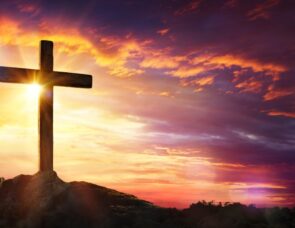
On your marks
So much happens in the last week of Jesus’ life and its events are so significant that it is important we find creative and memorable ways to share Jesus’ journey towards the cross with our children and families. Folding and tearing a piece of A4 paper to create a cross is not a new idea but this outline offers a narrative to go with it that enables us to tell the whole story. It is ideal for an all-age presentation on Good Friday or for sharing with a group of children and adults during, or in preparation for, Holy Week. Whenever our team has used this in churches and schools, children and families invariably ask to learn how to do it themselves, so in this way they take home a way of remembering the whole of the Holy Week story with just one piece of paper.
Get set
All you need is A4 plain white sheets of paper. It might be a good idea to practise the folding and tearing before your presentation alongside the narrative given below.
Go!
The friends of Jesus – who wrote down his story for us – spent a lot of time telling us what happened in the last week of his life. For them, and us, this is the most important part of his life because what he did wasn’t just for those who were there at the time. His death and coming alive again was for the whole world – and forever. So what happened during this last week, which we call Holy Week?
As his work came to an end, Jesus knew he had to go to the big city of Jerusalem for the last time.
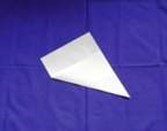
Hold up the piece of A4 paper flat, as if it were the ground plan of the big city of Jerusalem with its walls high on a hill.
When Jesus arrived, everyone was excited. They thought he was coming as a rescuer king to get rid of their enemy the Romans and make Israel great again. They tore down palm branches from the trees and welcomed him shouting, ‘Hosanna’.

Fold the paper as shown in the picture and then, holding the pointed end, wave it like a palm branch.
But Jesus began to say and do some strange things that week. Soon after he came into Jerusalem, he went to the temple, where he found people buying and selling things. He angrily threw them out, reminding them that God’s house should be a place of prayer
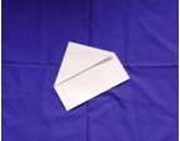
Fold the paper as shown in the picture so that it looks like a great big house with a roof.
During the week, he told stories that made people wonder what sort of king he was going to be. The leaders became more and more angry and plotted to have him removed before he caused more trouble. By the Thursday of that week, his followers were creeping quietly through the back streets of Jerusalem to an upstairs room in a house.
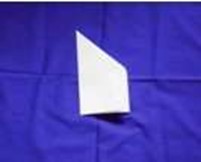
Fold ‘the temple’ shape in half so that it becomes a narrow house with an attic room upstairs in the roof space.
Here Jesus celebrated the special passover meal with his friends to remember how, long ago, God had sent Moses to rescue the people of Israel. During the meal, however, Jesus took some of the food and drink on the table and gave them new meanings. He held the cup of wine and said this was going to be like his blood poured out to rescue everyone.
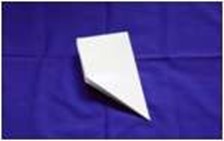
Hold the paper you have just folded by the pointed end, as if it were a chalice or cup.
Later, he took some of the special flat bread they were eating and broke it saying that this was like his body that would be broken to rescue everyone. He asked them to do this again and again in the future to remember him.
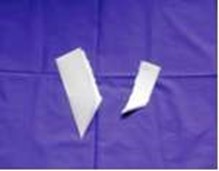
Tear a strip of paper off the edge of the paper, parallel to the fold, as shown in the picture, as you talk about the bread being broken like his body.
At the end of the meal, Jesus took his friends down to a garden outside the city walls so that he could pray. But his enemies were already coming to get him. All his friends ran away while he was tied up and taken to be put on trial late that night and on into the next morning. They said all sorts of unkind things about him, accusing him of things he hadn’t done, and treated him cruelly. But not once did he fight or argue back, nor was he rude to them. He took all their hatred and overcame it with love.
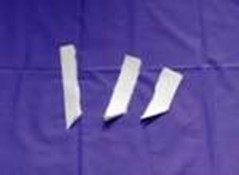
As you mention all the terrible things that happened to Jesus, tear the paper again in parallel to the fold, slowly and carefully, to reflect the pain and horror of what happened to Jesus.
Finally, they took Jesus outside the city like a common criminal and had him nailed to a cross. Even then, Jesus did not give into hatred, but was even heard to say ‘Father, forgive them’.
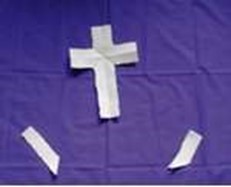
Open up the thinnest piece of paper left with the fold, keeping the other torn parts carefully on one side. You will have the shape of a cross.
And he really died – the soldiers made sure of that. Once the crowds had gone away, some of his friends took his body down and buried him in a cave not far away.
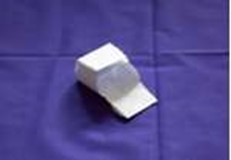
Fold up the cross loosely to make a box with an open entrance, as shown in the picture.
And then they rolled a great stone over the entrance.
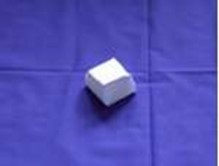
Fold in the last piece of the box to cover the way in, as shown in the picture.
It seemed that this was the end – what sort of rescuer had Jesus been? His friends went home defeated and sad to wait quietly during the next day, as it was a day of rest for the Jewish people. But early on the Sunday morning, some of the women went down to the cave to see if they could clean up Jesus’ body because it had been buried so quickly on the Friday evening. When they got there, they found that the cave was open.
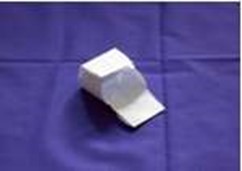
Unfold the last piece of the box to show the open entrance.
Then they discovered that Jesus had gone. Death was not the end – because of what Jesus had done. God can turn death into life for everyone!
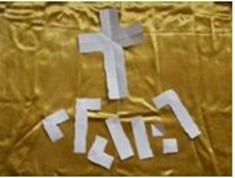
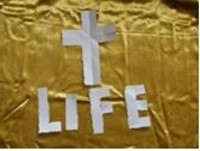
Unfold the box back into the shape of a cross and then pick up the piecesthat were torn away earlier and unfold them slowly. Now spell LIFE with the cut-off pieces, as shown in the picture.

 Download
Download